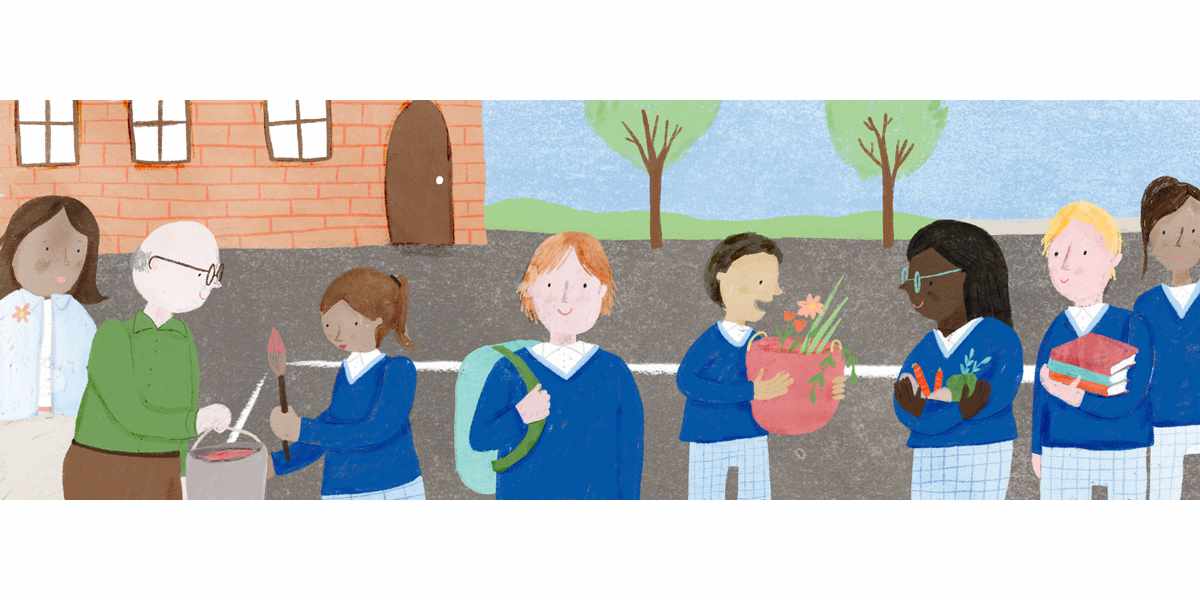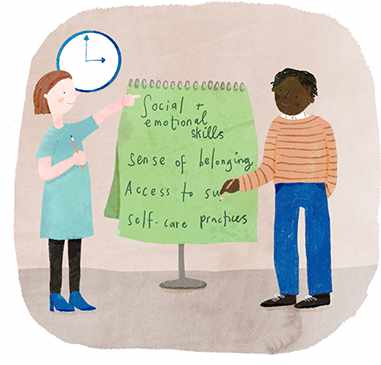Issue 118
TERM 3 2021
Six ways to focus on wellbeing in your school
Nicole Richardson shares six ways to use the Student Wellbeing Hub to promote wellbeing, resilience and inclusion in your school community.

The school library has long been a safe haven where students feel welcome. It is a place where ideas and creativity can run free, students can learn about cultures and identities outside of their own, diversity is celebrated, and mindfulness is embraced. For students who feel isolated, the school library is a much-needed space that offers the promise of safety and connection.
The uncertainty of life in a pandemic has demonstrated the importance of creating environments like this where student mental health and wellbeing can flourish. Heightened uncertainty and anxiety, particularly in hard-hit areas like Victoria that have faced lengthy lockdowns and fluctuating restrictions, have taken a strain on the mental health of students and teachers alike.
Wellbeing takes many shapes and forms, but the pandemic has drawn our attention to building resilience in the face of adversity. Lyn O’Grady, community psychologist and contributor for the Student Wellbeing Hub, explains resilience in the context of the pandemic:
“ Resilience helps us understand how to get through these times, draw on our inner strengths, work together to support each other, and strengthen relationships so that we’re not alone. ”

O’Grady describes resilience as a ‘useful and hopeful’ concept that allows us to use our experiences to create meaningful change for the future. Even as we see glimpses of hope in the introduction of vaccine programs across Australia, schools are encouraged to refresh their wellbeing policies and processes to continue building resilience beyond the pandemic.
The Student Wellbeing Hub (https://studentwellbeinghub. edu.au) is a free resource that can equip you with the skills and knowledge to get you started. Whether you want to enhance your wellbeing activities in the library or liaise with your school leadership team to introduce a whole-school focus, the Hub is full of handy resources to guide you every step of the way.
Here are six ways you can use the Student Wellbeing Hub to help all students – and their wellbeing – thrive.
- Unpack the Australian Student Wellbeing Framework: The Australian Student Wellbeing Framework provides the foundation for building positive, safe and resilient learning communities that allow every student to reach their full potential. Based on evidence recognising the connection between student safety, wellbeing and learning, it offers a set of guiding principles and practices across five pillars – leadership, student voice, support, inclusion and partnerships – that enable a whole-school approach to student wellbeing. Read through the Framework and browse the Illustrations of Practice to discover practical ways to use it in your school, such as introducing student-led forums to empower student voice.
- Check in with the School Wellbeing Check: The School Wellbeing Check is a brief survey that you can take to assess your current practices, aligned to the Australian Student Wellbeing Framework. Complete the survey yourself or share it with your leadership and wellbeing teams to help your school identify priority areas in building a safe, inclusive and positive learning community. The survey can be completed as a group to compare results and gain insight into how existing programs are perceived.
- Enhance your understanding of wellbeing topics: The Hub offers free, self-paced professional learning modules to give you the confidence to talk about themes around wellbeing. Equip yourself with an understanding of a range of wellbeing topics, from online safety to alcohol and drug use. The Resilient and Inclusive Classrooms course is a great place to start and has recently been updated to better understand resilience in the context of disasters such as the pandemic and bushfires. All courses on the Hub are aligned to the Australian Student Wellbeing Framework and AITSL Australian Professional Standards for Teachers.
- Invite families to the conversation: Student wellbeing starts at home and feeds into the classroom, so bridging the gap between the two will strengthen the support networks available for students. Share the Student Wellbeing Hub with parents to invite them to play an active role in supporting their child’s wellbeing. Parents are encouraged to explore resources that will help them understand wellbeing themes such as mental health and bullying, how to approach sensitive conversations at home, and how to keep their children safe and healthy.
- Remember to look after your own wellbeing: We know that it isn’t just students who have felt the strain of the pandemic on their mental health – teachers too need support as they continue to navigate life in, and beyond, the pandemic (Dabrowski, 2020). The Hub offers a professional learning module on principal and teacher wellbeing to give educators a framework within which to work, and provides practical strategies for building personal and professional wellbeing.
Make wellbeing a priority in your library or classroom
Once you have the tools and framework to understand student wellbeing, you will be better supported to take an active approach to promoting it in your library or classroom. While libraries have often led the way in promoting wellbeing, the Student Wellbeing Hub encourages a whole-school approach to ensure wellbeing seeps into the fabric of the entire learning community. It is when this happens that students – and their wellbeing – can truly flourish.

References:
Dabrowski, A. (2020). Teacher wellbeing during a pandemic: surviving or thriving? Social Education Research, 2(1), 35–40. https://doi.org/10.37256/ser.212021588